Welcome to the best free self-guided walking tours of Birmingham: Walk 1
Forged in Fire:
Birmingham’s Industrial Trail
Journey through the heart of Birmingham’s industrial story on this circular walk that follows the city’s historic waterways. Begin your industrial heritage journey at Victoria Square, where the city’s manufacturing wealth is reflected in grand civic architecture. From here, discover how industry shaped Birmingham at the Museum and Art Gallery before exploring Chamberlain Square, named for the city’s great industrial-era reformer. The route then leads you to The Roundhouse, a perfectly preserved canal-side landmark, before following the historic Birmingham Canal Old Line. Your walk concludes with two striking examples of industrial transformation: the atmospheric Gas Street Basin, once the heart of Birmingham’s canal transport network, and The Mailbox, where a vast postal sorting office has been reimagined for the 21st century.
This 2.5km walk reveals how Birmingham’s industrial might created both the historic and modern city.
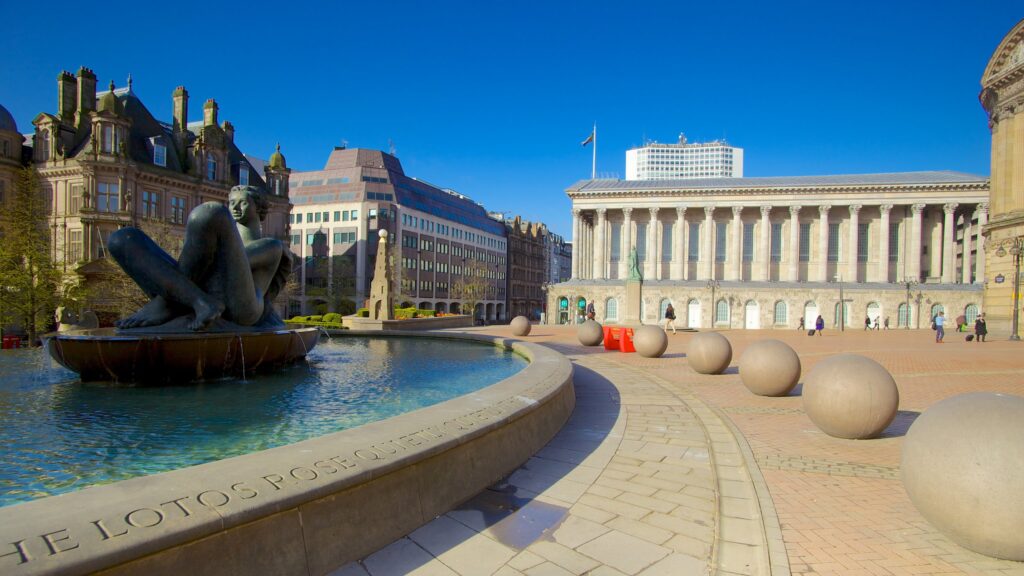
Stop 1
Victoria Square

What you will see
A large pedestrianised public square surrounded by significant buildings
The Town Hall, a grand classical-style building
The Council House with its “Big Brum” clock tower
The Iron: Man sculpture by Antony Gormley

Historical & cultural significance
Named after Queen Victoria and redesigned in 1993
Serves as the centre of civic life in Birmingham
Site of many public events, demonstrations, and celebrations

Look out for…
Look for the statue of Queen Victoria and notice how it faces the Council House, not the crowds
Find the “Floozie in the Jacuzzi” fountain, now replanted as a floral feature
Spot the hidden fossils in the limestone paving around the square
Stop 2
Birmingham Museum & Art Gallery
- Open Wednesday – Sunday, 10am – 5pm
- General admission is FREE
- Some events and exhibitions may charge, this information is included in the museum’s What’s On page
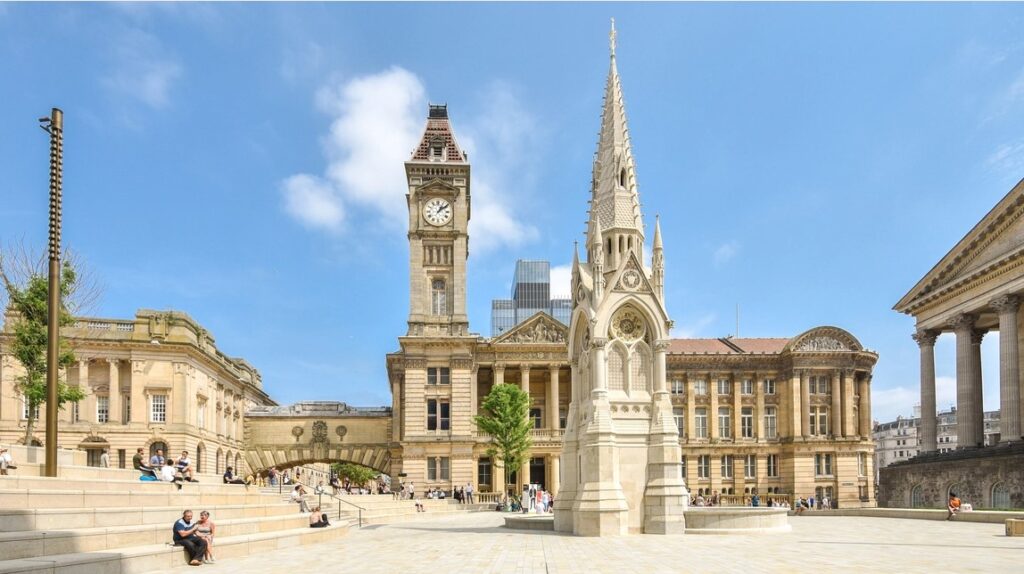

What you will see
A grand Victorian building housing extensive collections of art and historical artifacts
The Industrial Gallery showcasing Birmingham’s manufacturing heritage
Pre-Raphaelite paintings and the Staffordshire Hoard

Historical & cultural significance
Opened in 1885 to showcase Birmingham’s industrial and artistic achievements
Houses one of the world’s largest Pre-Raphaelite collections
Plays a crucial role in preserving and presenting Birmingham’s industrial history

Look out for…
Look for the “Birmingham School” of jewellery and metalwork in the Industrial Gallery
Find the Sultanganj Buddha, the largest known metal Buddha from ancient India
Observe the intricate details in the building’s architecture, including the Round Room’s dome
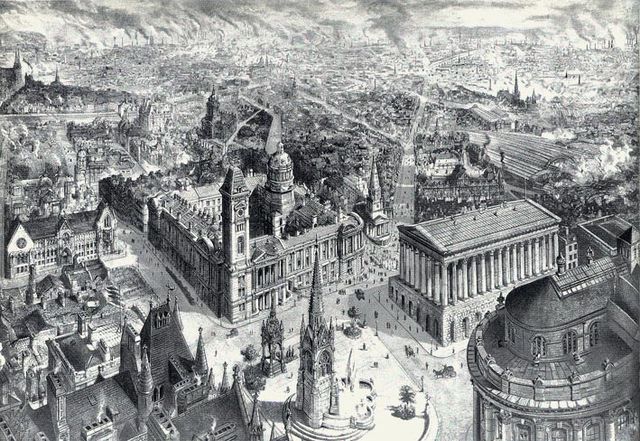
Stop 3
Chamberlain Square

What you will see
A newly renovated public square adjacent to Victoria Square
The Birmingham Museum and Art Gallery on one side
Modern office buildings and the Library of Birmingham nearby

Historical & cultural significance
Named after Joseph Chamberlain, a significant figure in Birmingham’s industrial and political history
Part of the Big City Plan, Birmingham’s 20-year city centre masterplan

Look out for…
Look for the statue of Joseph Chamberlain and note his iconic monocle and orchid buttonhole
Observe the contrast between the Victorian architecture of the Museum and the modern buildings surrounding the square
Find the carved stone panels on the Museum’s exterior depicting various industries
Stop 4
The Roundhouse
Please note that the majority of the Roundhouse building has been transformed into office space. There is a Visitor Centre with a display space which is free to enter for all visitors. See the National Trust website
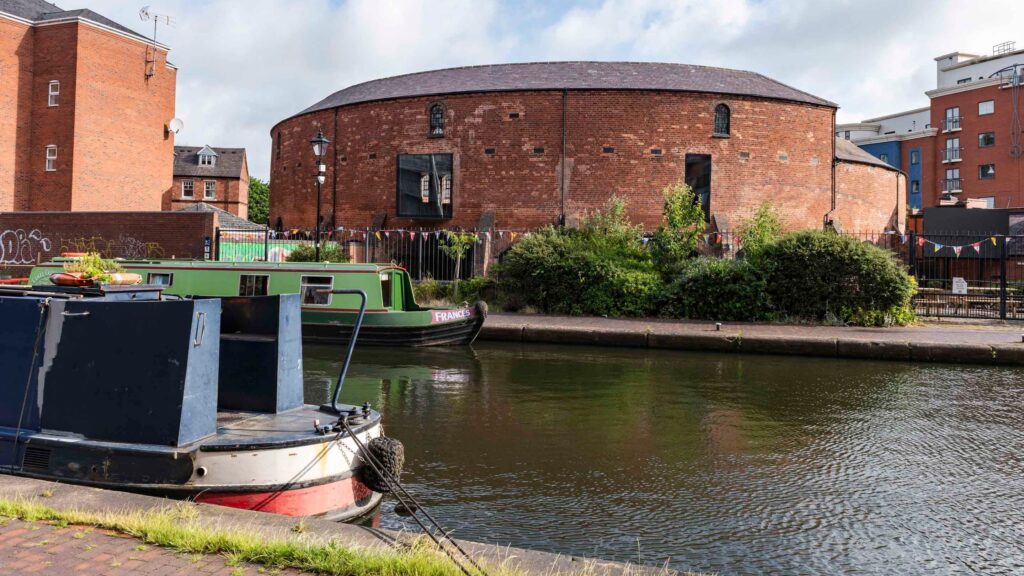

What you will see
A distinctive horseshoe-shaped building alongside the canal
Recently restored 19th-century architecture
A visitor centre and starting point for various city tours

Historical & cultural significance
Built in 1874 as stables and stores for the Birmingham Corporation
A rare survival of Birmingham’s Victorian industrial architecture
Recently renovated as part of a partnership between the National Trust and Canal & River Trust

Look out for…
Examine the building’s unique circular shape and how it fits perfectly alongside the canal
Look for the original cobblestones in the courtyard
Find the old horse ramps used to lead horses up to the first floor stables
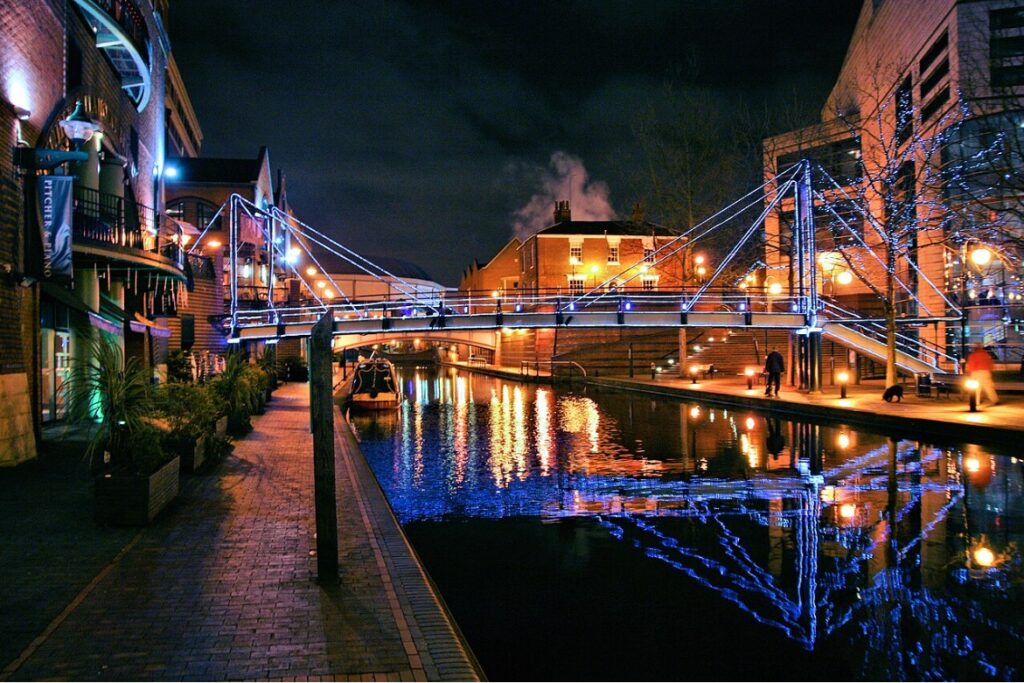
Stop 5
Birmingham Canal Old Line

What you will see
A historic canal cutting through the city centre
Old warehouses and factories lining the canal
Narrow boats and barges navigating the waterway

Historical & cultural significance
Part of Birmingham’s extensive canal network, once longer than that of Venice
Crucial for the transportation of goods during the Industrial Revolution
Now a leisure and heritage asset, popular with boaters and walkers

Look out for…
Look for old mooring rings and bollards along the canal edge
Observe the different types of bridges crossing the canal, from traditional brick to modern steel
Try to spot wildlife along the canal, including waterfowl and urban foxes
Stop 6
Gas Basin
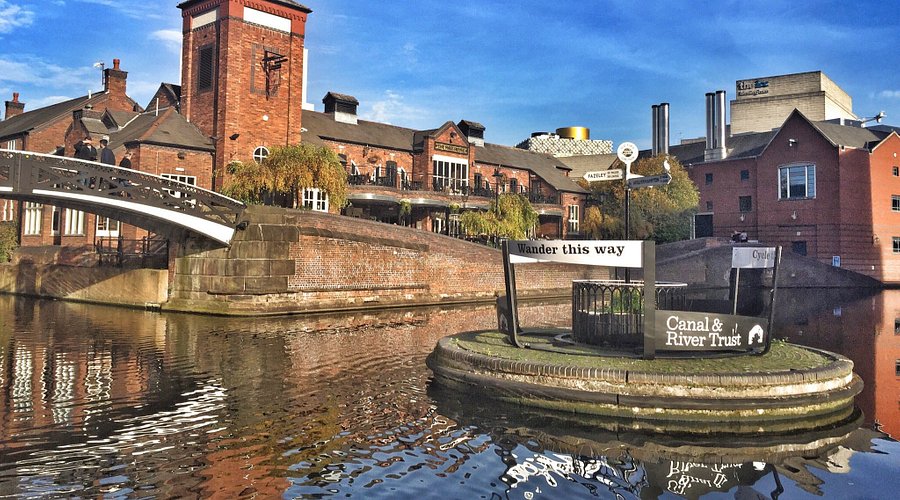

What you will see
A bustling canal junction where the Worcester & Birmingham Canal meets the Birmingham Canal Main Line
Historic warehouses and wharf buildings, now converted into restaurants and offices
Original canal features including bridges, mooring rings, and lock mechanisms
A vibrant mix of moored narrowboats against industrial-era architecture

Historical & cultural significance
Once the bustling heart of Birmingham’s vast canal network, nicknamed ‘Venice of the North’
Critical transport hub during Industrial Revolution, connecting Birmingham’s factories to the rest of Britain
Exemplifies the city’s canal heritage, which was essential to Birmingham becoming the ‘Workshop of the World’
Key site in the transformation of industrial canals into leisure and cultural spaces

Look out for…
Find the guillotine lock gates that once separated rival canal companies’ waters
Look for deep grooves in the stonework where boat ropes wore into bridges over centuries
Spot the original cast iron bridge plates showing canal company names and dates
Spot the old crane bases and loading bays along the wharf edges
Find the former toll office where cargo duties were collected
Examine the restored cobblestone surfaces, purposefully rough to help horses gain traction while towing boats
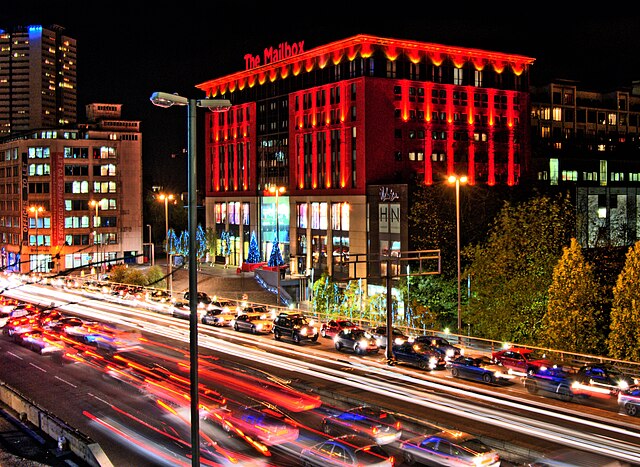

What you will see
An immense repurposed red-brick building spanning multiple city blocks
Glass-covered internal shopping streets in former sorting halls
The BBC Midlands headquarters and public exhibition space
Original railway platforms and tracks preserved within the complex

Historical & cultural significance
Built in 1970 as the Royal Mail’s largest sorting office outside London
Key example of Birmingham’s transition from industrial to service economy
Demonstrates creative reuse of 20th-century industrial architecture
Connects the city’s transport heritage (rail and canal) to modern media and retail

Look out for…
Find the preserved railway tracks running through the building’s lower level
Look for original Royal Mail signage and postal features still visible in the structure
Spot the contrast between industrial-scale spaces and modern boutique subdivisions
Notice how the canal-side warehouses have been integrated into the modern complex
